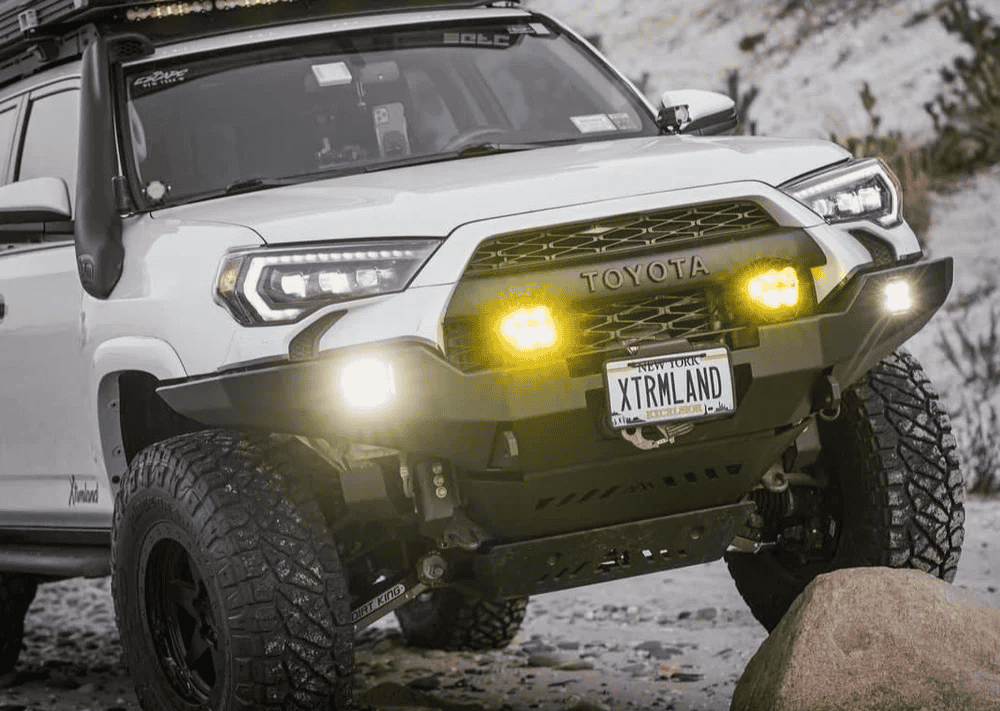Overland Vehicles

An expedition build is a systems level project, not just parts shopping. A scheduled call brings structure, priorities, and technical clarity before steel or aluminum ever gets cut. With a focused conversation, you can align mission goals with the right platform, manage weight and payload, and ensure your power, water, and storage support real miles in real conditions. A good call saves months of rework and keeps the budget tied to outcomes that matter on the trail.
Schedule expedition build call for overland planning and rig design consultation with OZK Customs in Fayetteville Arkansas.
A purposeful call also surfaces assumptions early. Maybe you expect four season comfort at elevation, daily device charging, and quiet nights in the desert. Maybe your route jumps from washboard in canyon country to muddy forest roads after heavy rain. The more context you share, the better your build team can recommend the right suspension tuning, tire size, gearing, and protection to keep you moving.
Start with your mission. Are you crossing mountain passes, exploring remote desert tracks, or threading tight eastern forests with repeated water crossings. Terrain drives tire selection, clearance, armor, and suspension decisions. If winter routes are likely, discuss traction management, cabin heat strategies, window insulation, and cold soaked starting plans. If you expect deep sand, plan for flotation, recovery boards, and a compressor with duty cycle to match frequent airing down and up.
Bring specifics. Share your starting platform if chosen, or describe your short list with pros and cons. Provide curb weight, payload, tow ratings if relevant, and any existing modifications. Outline your team size, pets, bikes, boards, or film gear. List sleeping needs, galley expectations, and hygiene preferences. Define your off grid target in hours or days. Identify power hungry devices and daily usage in watt hours. A simple spreadsheet or notes app makes this easy.
Set a budget range, not a single number. Builds often progress in phases, so decide what must be finished for your first departure and what can follow later. Share your target handoff date and any travel commitments after pickup. Transparent constraints help your builder recommend options that protect safety and reliability without overextending the schedule.
Include your tolerance for service intervals and routine checks. Expedition travel rewards prevention. If you prefer minimal maintenance, that informs choices like sealed bearings, corrosion resistant fasteners, and protective coatings that stand up to salt, red clay, and desert dust.
A call is the best time to validate platform fit. Payload is the ceiling you cannot ignore. Add people, water, fuel, food, tools, recovery kit, and camp systems, then layer the build weight. Confirm axle ratings and plan to stay under them with margin. Discuss braking performance with larger tires and added mass. Talk about driveline angles, alignment, and heat management for long climbs in summer. A team that takes the time to do this math will keep you safer.
Once the mission and constraints are clear, the conversation shifts to systems. Power is more than a battery size. It is charge sources, wire gauge, fusing, and an inverter that matches your devices. Water is more than a tank. It includes filtration, winterization, and a pump strategy that is quiet and reliable. Storage is more than volume. It needs weight distribution, quick access, and protection for fragile gear.
Cover recovery first. Winch capacity, tow points tied into structure, kinetic rope, soft shackles, and a jack plan that works on uneven ground make the difference when the trail throws a curve. Lighting matters too. Aim for controlled beams that reduce glare in dust, fog, or snow. Communications and navigation deserve equal time. Plan for satellite messaging, offline maps, and antenna placement that will not fight roof cargo or solar panels.
A final topic is human factors. Quiet cabins reduce fatigue. Thermal control expands your season. Ergonomics at the galley and sleep space keep spirits high on long trips. Good builds lift the whole experience, not just obstacles.
When you are ready to see how these parts become a coherent rig, take a look at Explore overland rigs for a sense of outcomes and approach. If you already know you want tailored work, you can review the process at Custom overland upfit to understand how a concept becomes a finished build.
You now have a clear framework to schedule an expedition build call and make it count. Gather your route ideas, payload math, and system priorities. Decide on budget ranges and a handoff window. Then meet with a builder who listens first and translates your goals into engineering, fabrication, and testing.
OZK Customs designs and builds overland rigs that carry families, athletes, and explorers into real terrain with confidence. Our team in Northwest Arkansas maps your mission to power, water, storage, and protection that work together. We walk through platform selection, weight targets, and reliability steps, then deliver a rig you can trust. Learn more about our values and build philosophy at Why choose OZK Customs.
Schedule your consultation, share your mission and constraints, and let us convert a focused plan into a trail ready solution. We will outline scope, pricing, and phases that fit your timeline, so your next route starts with a confident first mile.
Ready to plan your expedition build with a pro team that designs, fabricates, and delivers trail proven rigs? Book your consultation, share your mission and timeline, and let OZK Customs translate that into a clear scope, pricing, and build path. Lock in your slot and get a rig engineered for your route, terrain, and load.
ADDRESS:
6159 E Huntsville Rd, Fayetteville, AR 72701
PHONE:
(479) 326-9200
EMAIL:
info@ozkvans.com